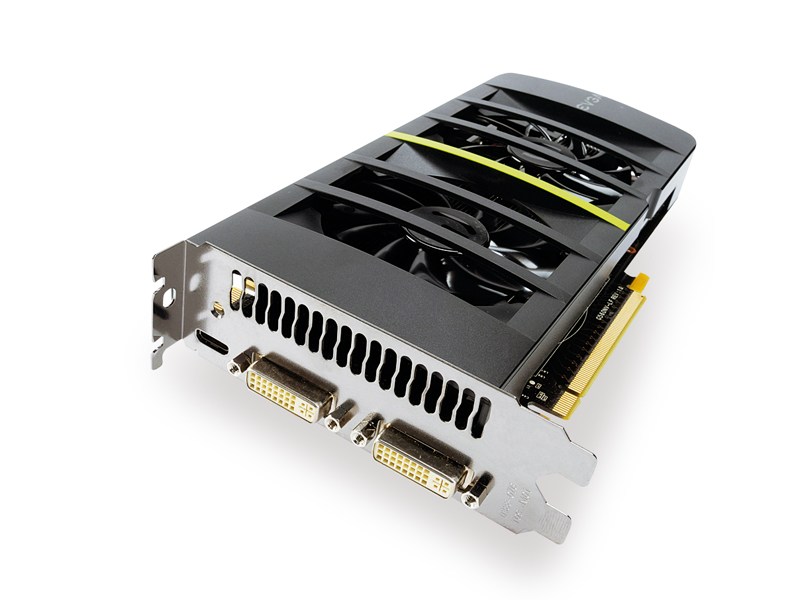
They've done it again. Graphics card maker Point of View has released a new board with no less than 4GB of video memory. It is, quite simply, pointless. Actually, it's worse than pointless.
The extra memory makes the card more expensive and makes performance worse. It's a double fail that seems hard to comprehend, but it's also totemic of a culture of gimmicks and obfuscatory specifications that runs through most of the PC hardware industry. Here's a handy guide to some of the worst offenders.
First up is the aforementioned low end graphics card loaded with memory. Multiple gigabytes of graphics memory sounds impressive, but the logic behind it is nonexistent.
High graphical detail demands lots of memory. But the GPUs in low end cards are not capable of processing big resolutions, hefty textures and complex shader programmes. Making matters worse, keeping the cost down on such cards inevitably means cheap memory must be used.
Invariably, therefore, low end cards with extended memory offer slower data transfer rates than their standard siblings. The result is a whole hill of memory, most of which is never used and the remainder simply serves to reduce performance.
The state of drives
Another favourite of mine involves the sequential read and write performance of solid state drives. Things have really begun to accelerate over the past year with single-drive performance now exceeding 500MB/s. Indeed, I've recently been playing with a PCI Express SSD capable of 1.65GB/s of raw bandwidth. That's a monumental number by any metric. Problem is, it's not a number you're ever likely to benefit from in the real world.
There are multiple issues at stake here. Firstly, shunting data around a PC or from drive to drive depends on the weakest link, not the fastest, so you'll need multiple SSDs to achieve anything like the peak theoretical performance.
Get daily insight, inspiration and deals in your inbox
Sign up for breaking news, reviews, opinion, top tech deals, and more.
But even if you do have more than one super speedy SSD, odds are you won't really benefit from those massive transfer rates. That's because big files tend to contain incompressible data - movies, music and images. Typically, all are already highly compressed.
That matters because the quickest SSDs tend to use data compression to achieve peak performance and that's not possible with incompressible files.
The final snag with SSD performance involves random access performance. Reading and writing lots of small data sets is much more reflective of daily PC use than heavy lifting of multi-GB files, but it's also where SSDs are weakest.
In one of my random access tests of that 1.65GB/s-capable PCI Express SSD, it achieved a mere 20MB/s. It costs the thick end of £1,500. Enough said.
Monitoring screens
PC monitors are another rich source of obfuscatory specifications, and perhaps the most misleading metric is contrast. It's not uncommon now to find monitors claiming contrast ratios of 1,000,000 to one or more, but read the fine print and you'll discover that figures exceeding 1,000 to one almost always refer to dynamic contrast. In other words, we're talking about actively dimming the backlight for darker blacks.
That may seem great, but existing monitors have a single big backlight. That means the dynamic contrast ratio only refers to the range of brightness comparing one frame to another, not within a single frame. And it's contrast within a single frame that gives images vibrancy.
The trend to towards so-called cinematic 16:9 aspect ratios and full-HD resolutions are further screen-related sins. Most monitors and laptop screens are now 16:9 widescreen and it's usually claimed this is better because it suits widescreen video content.
Admittedly, HDTV is usually produced in 16:9, but movies are wider still. More to the point, most PC apps are conducted in portrait configuration, so a wide, shallow screen isn't much use. As for that full-HD 1080p resolution, it sometimes means fewer pixels, not more, when compared to a 16:10 widescreen display.
There are plenty of other examples. Power supply units, for example, are often sold on the strength of peak wattage output when it's really the quality and stability of supply that matters.
The battery life claimed for laptops is routinely a work of the most sublime fiction unless you never use Wi-Fi and enjoy working with the LCD screen switched off. I'm not joking.
Of course, kit makers aren't always out to pull a fast one and comparative metrics are often very useful.
The lesson here is to stay very frosty when it comes to big numbers on spec sheets. You've been warned.